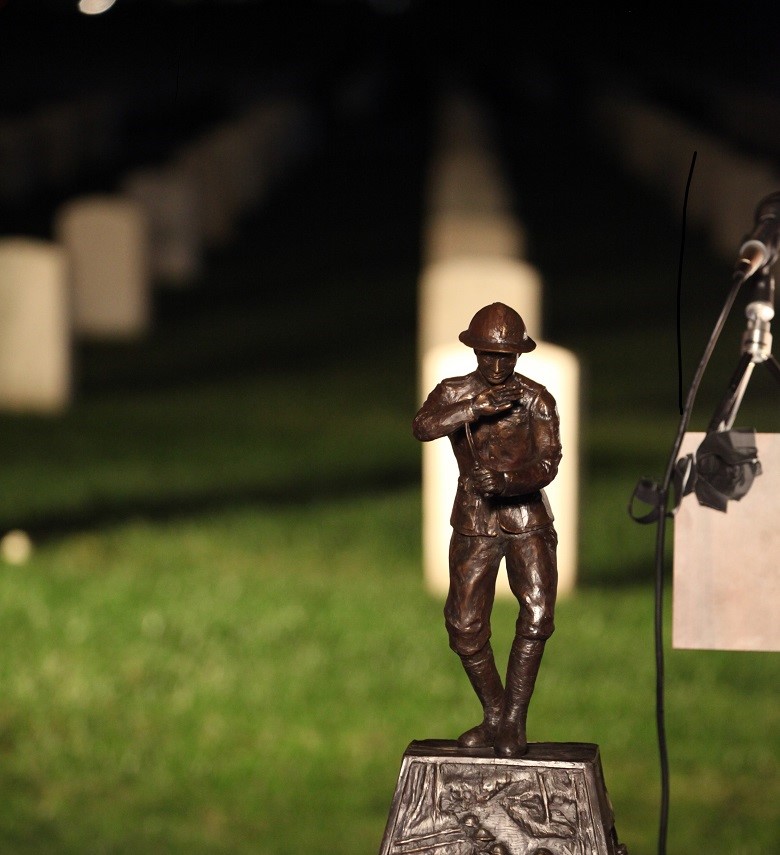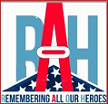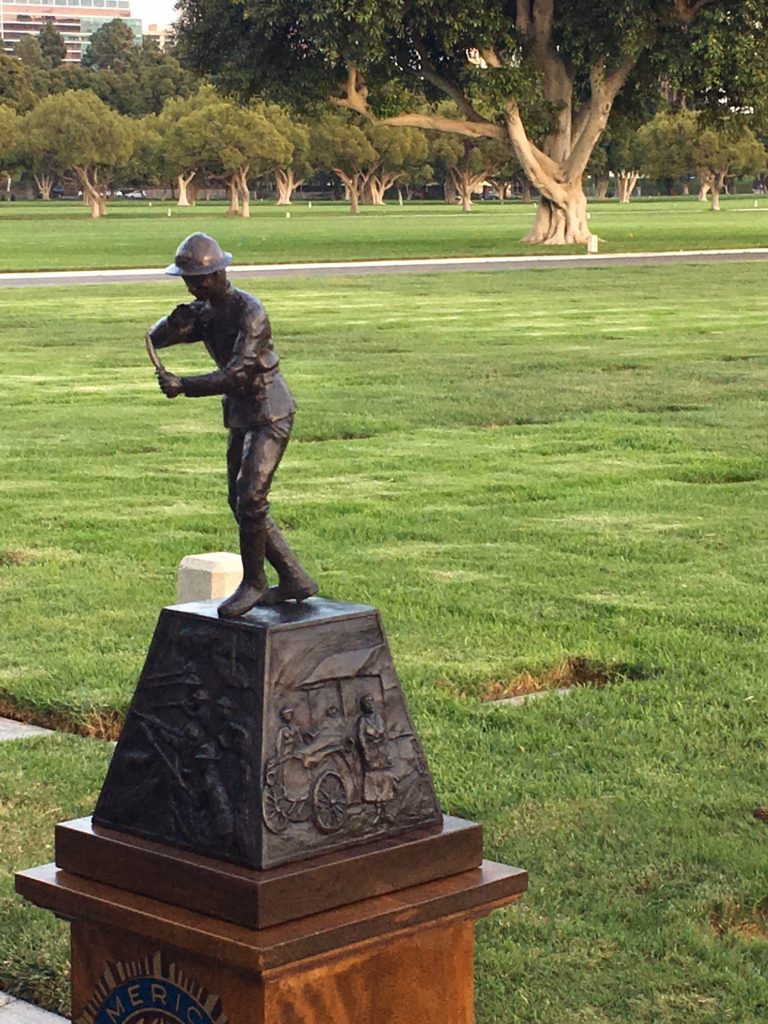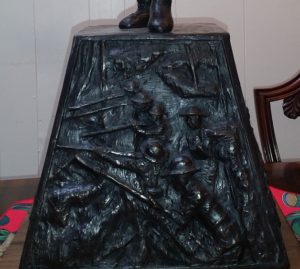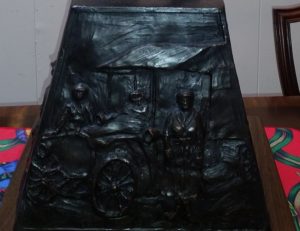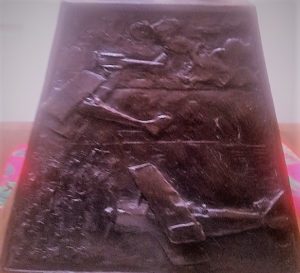Why we used the likeness of an actual soldier –
Read below and you will understand.
With only his Bolo knife left to him single handily, Private Johnson fought off the last of 22 German elite troops thereby saving a fellow soldier from capture and his troops from a well-planned surprise attack that would have killed many American soldiers. Former President Theodore Roosevelt, in his book Rank and File on World War I heroes, called Johnson one of the five bravest Americans to serve in that war. Sgt Johnson’s engagement was the very first victory and major battle with the enemy. From that point on Americans never wavered in attacking and defeating the enemy. We could think of no better likeness to stand over, and with, all our brave soldiers both male and female, black or white.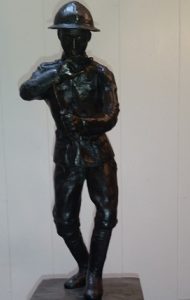
Awards:
- Received France’s highest military honor, the Croix de guerre. 1918 Johnson’s ribbon also featured a golden palm for “extraordinary valor.” He was the first American to receive this high honor from the French government.
- Purple Heart was granted to Henry Johnson posthumously 1996.
- Distinguished Service Cross, awarded in 2003
- In 2015, William Henry Johnson was awarded the nation’s highest honor, the Congressional Medal of Honor.
What the Panels at the Base Represent:
Panel One: The 369th in the Trenches at the Front
This panel depicts troops in their trench ready to engage with the enemy. In this the panel shows a likeness of the the Colored Troops as they were known were in fact the first troops to be dispatched to the World War I front and the first to engage in active battle with the Germans . During the 369th’s service they were never, defeated, lost ground or gave up any man to the Germans as a prisoner of war. They were the most decorated of all the AEG troops and served the longest by at least 5 days (191 total days in battle) over any other. They served under the French which is why they wear French Helmets and carry French rifles in this panel.
Panel Two: Women at the Front
There were well over 20,000 women volunteers. Many braved the Atlantic to make the journey and were generally unprepared for the brutality of the war. There are many Black women including many African American women who came over to support the colored troops and they too had to put up with much of the same prejudice and racism . Although they were constantly at the front non died in battle but actually died in large numbers due to their exposure to the influenza outbreak taking care of the soldiers.
Panel Three: Flight
Some of the greatest test grounds for the 20th century were in the air. While the Wright Brothers first flight was 11 years prior there was little advancement, or need for that matter, of avionics until the war. Therefore the pilots and observers were pushing the limit every time they went up in lighter than air vehicles. At the same time these Pilots and observers were among the best trained and highly skilled combatants of the Great War. Their job was to fly over the enemy lines to observe advancing threats and military targets for the troops and artillery without a parachute.
Panel Four
Dedication Panel Intentionally Blank Until money is raised:
